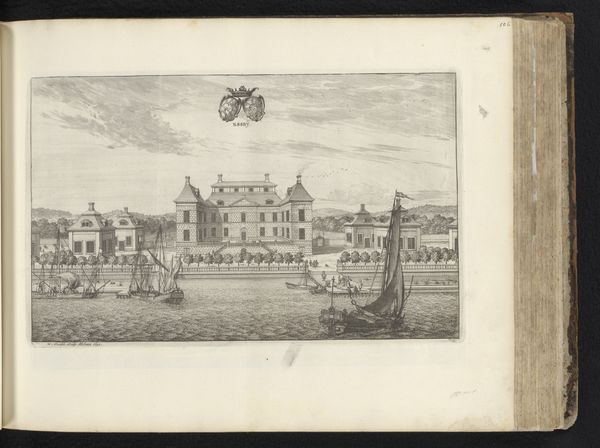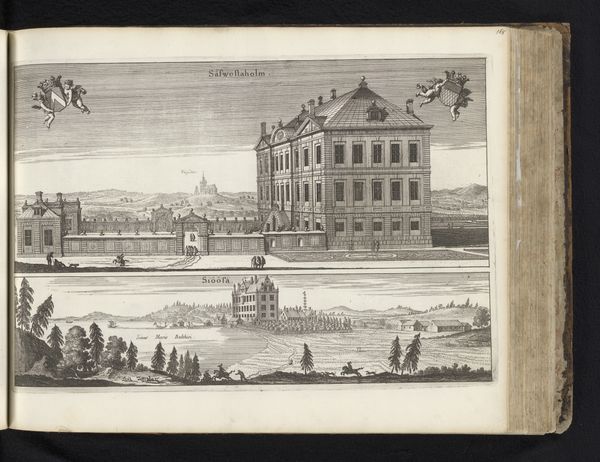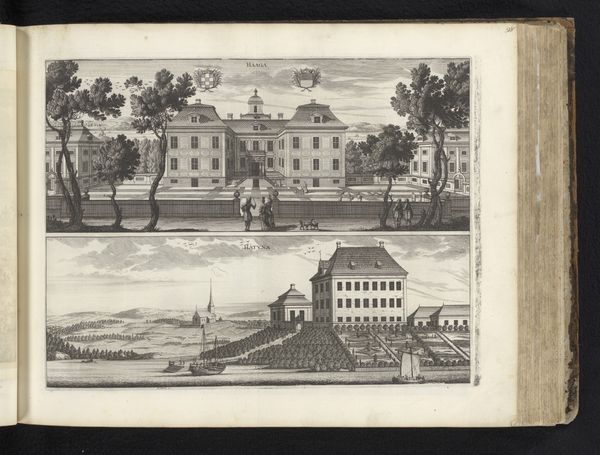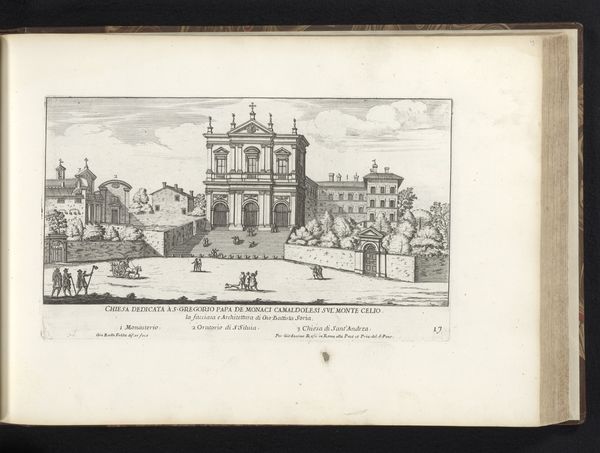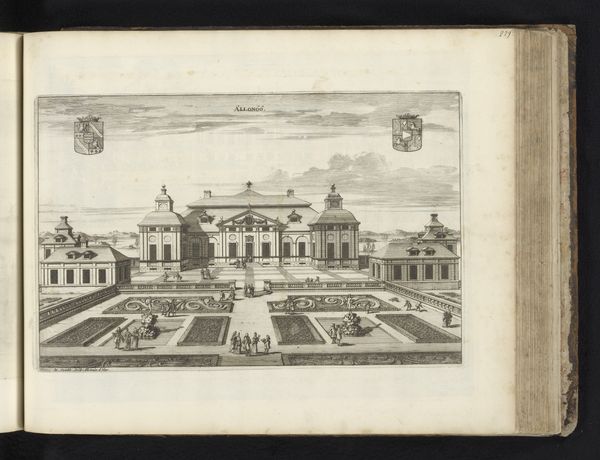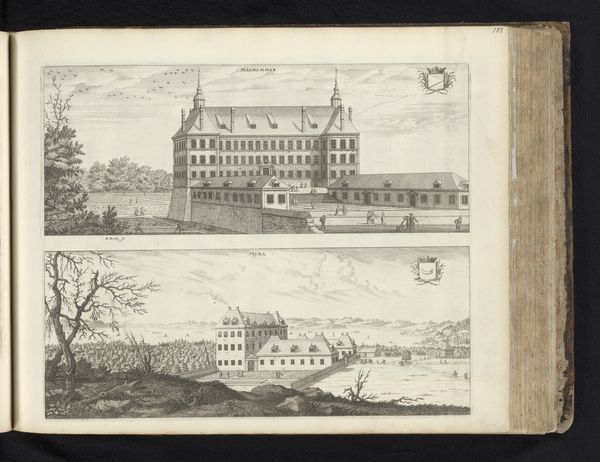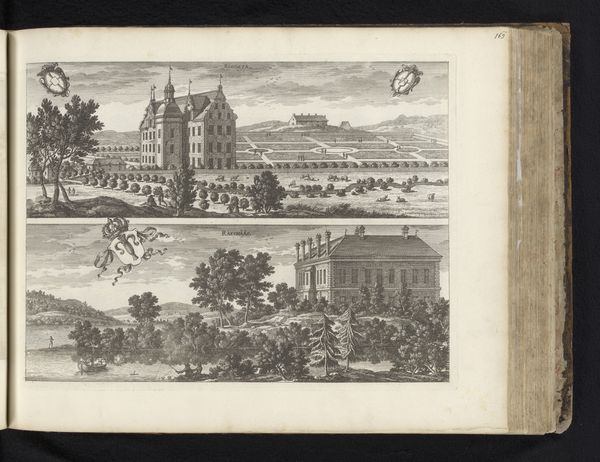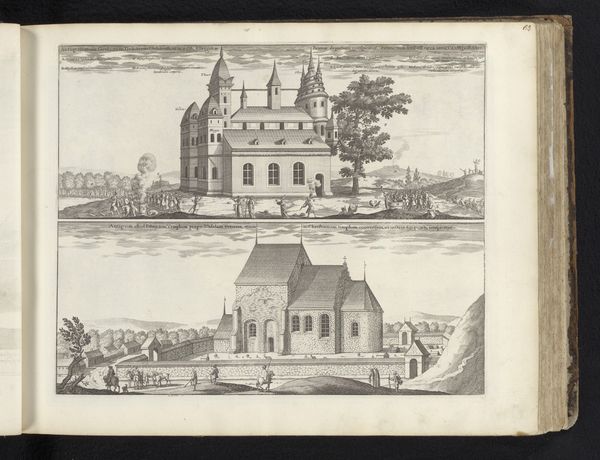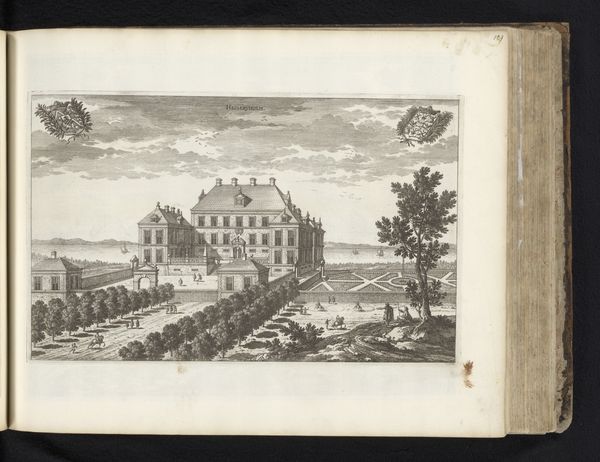
drawing, print, engraving, architecture
drawing
aged paper
toned paper
baroque
old engraving style
sketch book
landscape
personal sketchbook
pen-ink sketch
pen and pencil
line
pen work
sketchbook drawing
sketchbook art
engraving
architecture
Dimensions: height 205 mm, width 335 mm
Copyright: Rijks Museum: Open Domain
Curator: This delicate print offers us a "Gezicht op slot Hässelby" or "View of Hässelby Castle," created in 1679 by Jean Marot. Editor: The stark, almost skeletal lines evoke a sense of measured elegance. It feels very controlled, like looking at a precisely calculated equation of space and form. Curator: Precisely. Marot was known for architectural renderings and this piece beautifully exemplifies the formal Baroque style. It was a period heavily influenced by absolutism, and prints such as this played an important part in shaping perceptions of power through controlled symmetry and spatial harmony, showcasing the castle and by extension its aristocratic owners as paradigms of order. Editor: Tell me more about how you view the composition itself as working towards this controlled effect. Curator: Consider the almost unwavering symmetry—each pavilion mirroring the other. Also note how the horizon cuts the frame quite evenly between the depiction of the grounds versus the expansive sky, creating a sense of balance and a hierarchical clarity that reinforces the castle as the center of all spatial intention. The sky with it's gentle almost perfectly horizontal lines seems like a gentle sky which, when contrasted to the sharpness of the pen work, creates a dramatic, somewhat sublime image that feels uniquely of its moment. Editor: Interesting! The people dotted about almost seem like afterthoughts, shrinking against the architectural might, I wonder, might it also imply the limited impact of those figures' lived experience as opposed to the grand design? Curator: That's a fair point, it certainly underlines the importance of context. In the end, it shows a conscious attempt to organize the natural world according to a rational framework – perhaps even dictating its reception. Editor: Absolutely. It's funny, such intentional composition almost creates an illusion of permanence, even though we know the landscape is continuously shifting and evolving socially. I can't help but feel melancholic, viewing it and realizing so much about its subjects have changed irrevocably. Curator: I think you bring a crucial aspect to our appreciation. By blending the rigorous structure with its softer atmospheric qualities, the piece opens a dialogue about not only historical contexts, but its temporal, and perhaps melancholic existence.
Comments
No comments
Be the first to comment and join the conversation on the ultimate creative platform.


